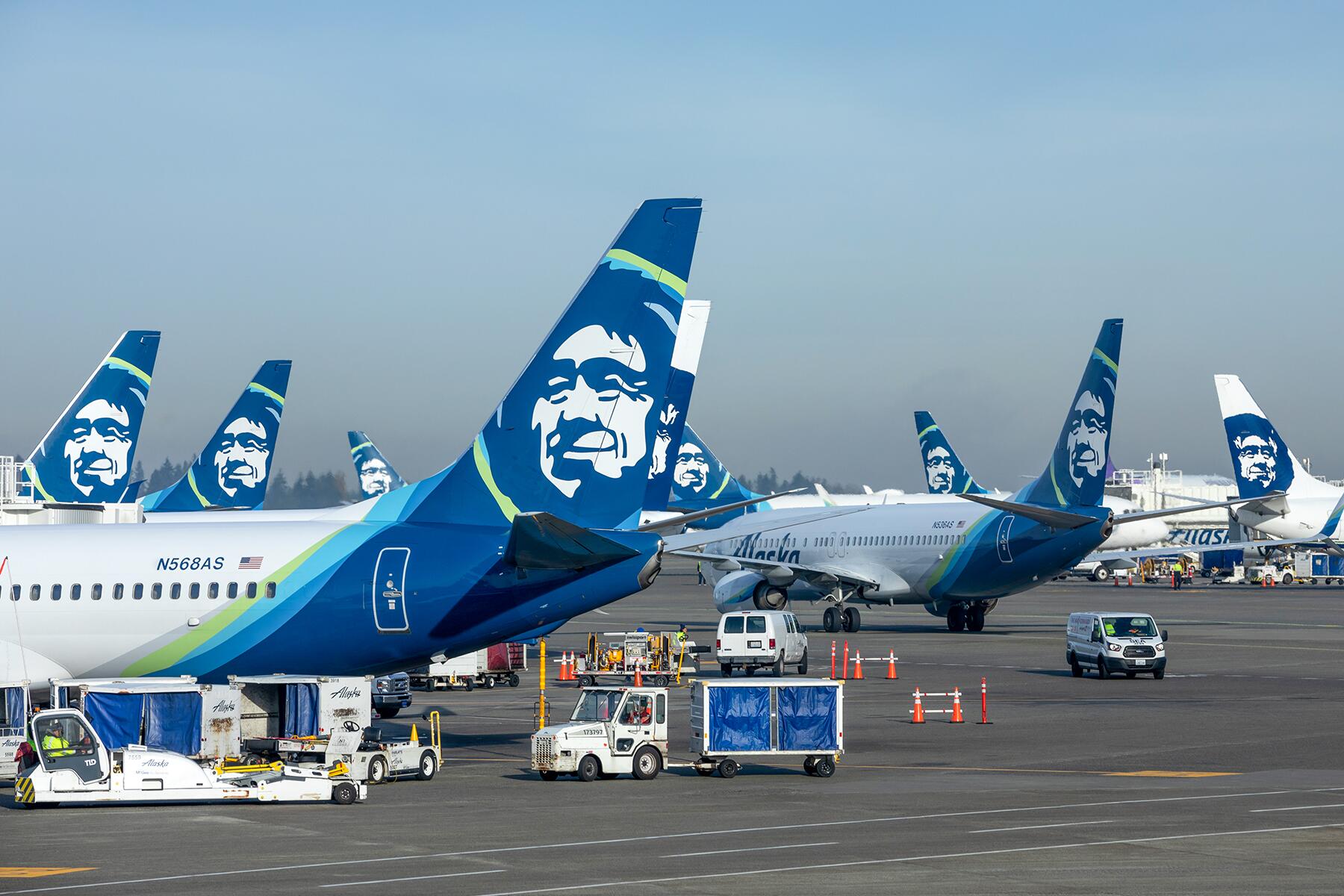He is charged with 83 counts of attempted murder.
An off-duty pilot traveling in jump seat of the flight deck attempted to shut off the engines of an Alaska Airlines flight on Monday. Identified as Joseph D. Emerson, the suspect was subdued by the crew and the flight landed safely. The San Francisco-bound flight was diverted to Portland where Emerson was arrested. He faces 83 counts of attempted murder, 83 counts of reckless endangerment, and one count of endangering an aircraft.
Alaska Airlines explained in a statement that the off-duty pilot tried to shut down the engines by engaging the fire suspension system: “The fire suppression system consists of a T-handle for each engine. If the T-handle is fully deployed, a valve in the wing closes to shut off fuel to the engine. In this case, the quick reaction of our crew to reset the T-handles ensured engine power was not lost.”
A passenger told CNN that they didn’t realize what was happening until the flight attendant made an announcement for an early landing. Emerson was walked to the back of the plane and handcuffed to a seat.
Emerson had been bound for San Francisco to pilot another flight. He told investigators he had taken “magic mushrooms” 48 hours prior to the the incident.
Recommended Fodor’s Video
The FAA said that the incident was not linked to current world events and the FBI said there is no continued threat.
The Air Line Pilots Association (ALPA) said in a statement, “While the investigation is just getting underway, it is important to remember that the airline pilot profession in North America is one of the most highly vetted and scrutinized careers, and for good reason. For decades, the United States has pioneered a proactive approach to improving aviation safety and maintaining a healthy work environment for pilots. In addition, U.S. pilots are continuously evaluated throughout their careers through training, medical exams, crew resource management, and programs such as the Line Operations Safety Audit, as well as by the airline and during random flight checks by the Federal Aviation Administration.”
Jump Seat Rules
The access to the flight deck (or cockpit) is carefully monitored. The jump seat is an extra seat for a crew member or an authorized FAA personnel. It can’t be offered to passengers and the captain of a flight has the last say on who gets to ride.
Off-duty pilots ride in the jump seat when they need to reach an airport for their flight—in the U.S., airlines allow each others’ pilots to take these seats, too. It’s basically a work commute for pilots, but they’re part of the crew and often help the pilots as an extra pair of eyes and ears. In 2018, a nosediving Lion Air flight was saved from a fatal incident when an off-duty pilot in the jump seat told the crew on how to handle the malfunctioning system.
ALPA has a jump seat guide that explains restrictions, courtesy, and safety protocols for U.S. flights. Jump seat regulations are governed by the FAA, TSA security directives, and company policies, it explains. The captain has the final authority and they may deny any jump seat privilege.
Meanwhile, an off-duty captain in the jump seat is considered a crewmember and thus, should conduct themselves as such. The guidelines say, they must “[w]ear a headset and observe sterile cockpit rules, but speak up when necessary. Jump-seaters may also serve as a security asset by helping with flight deck door openings and, in an extreme case, protecting the flight crew from an assault on the flight deck.”
Can It Happen Again?
John Cox, a retired airline pilot, told ABC News, “This is an extremely rare event. In 53 years, I have never heard of a jump seat rider attempting to shut down engines.”
By law, airlines are required to perform a background check on pilots before hiring them. The National Air Transportation Association (NATA), a trade association that represents aviation businesses, has a primer on background checks that airport businesses need to conduct on people who may receive unescorted access to the Security Identification Display Area (SIDA). It requires employers to check the past 10 years of employment, and an FBI criminal record fingerprint check may be required.
As per the FAA, pilots are also required to get medical exams done every six months to five years. They need to report any physical or mental conditions and medications. The FAA also states that most mental health conditions, if treated, don’t lead to disqualification of pilots.
Flight crew and pilots are also trained for all emergencies, from medical issues and fires to evacuations and hijacking.



